Public Procurement Survey of Suppliers: analysis 2020
An analysis of findings from the Public Procurement Survey of Suppliers 2020.
2. Profile of respondents
In this section, we provide information about the profile of the 1,556 respondents to the survey. As will be shown, the base of suppliers who are interested in working with the Scottish public sector is highly diverse. This is reflected in the fact that suppliers of all types, sizes and sectors participated in the survey, with responses coming from businesses across Scotland and further afield.
We asked respondents how they would describe their organisation. The results are displayed in Figure 2.1 below.
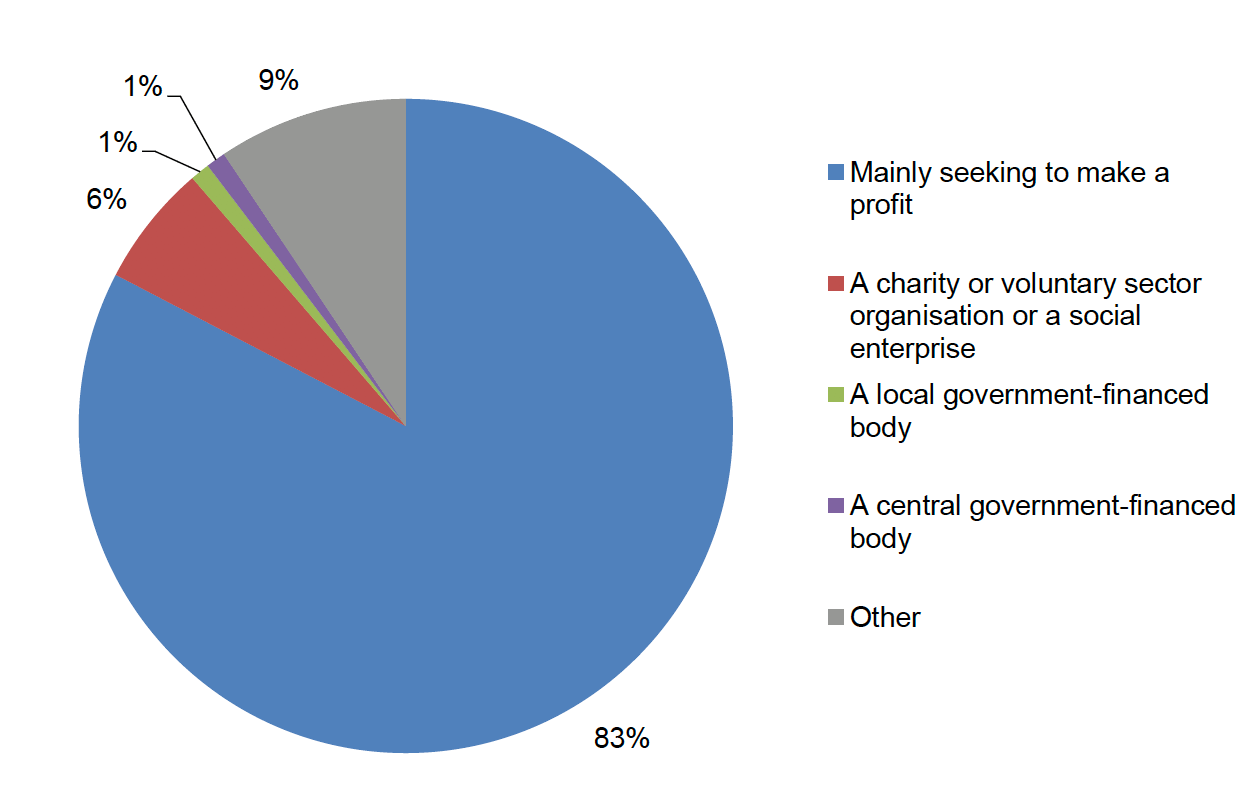
As indicated above, the largest share of respondents (83%) said that their organisation was mainly seeking to make a profit (e.g. for owners or shareholders). Six per cent of responses were from charities, voluntary sector organisations or social enterprises. Among the 9% of respondents who categorised themselves as another type of organisation, many described themselves as a private limited company, while others described themselves as sole traders and/or self employed, or as a family-run business.[3]
For the purposes of public procurement rules, an organisation can be classed as a supported business if: it has the social and professional integration of disabled and disadvantaged people as its main aim; and at least 30% of its employees are disabled or disadvantaged. Of 1,547 respondents, 9% indicated that they were a supported business.
When taking staff numbers as a measure of business size, we see that small and medium-sized enterprises (SMEs) (i.e. businesses with fewer than 250 employees) dominated in the responses to the survey. We asked respondents about the number of people working in their organisation (Figure 2.2).
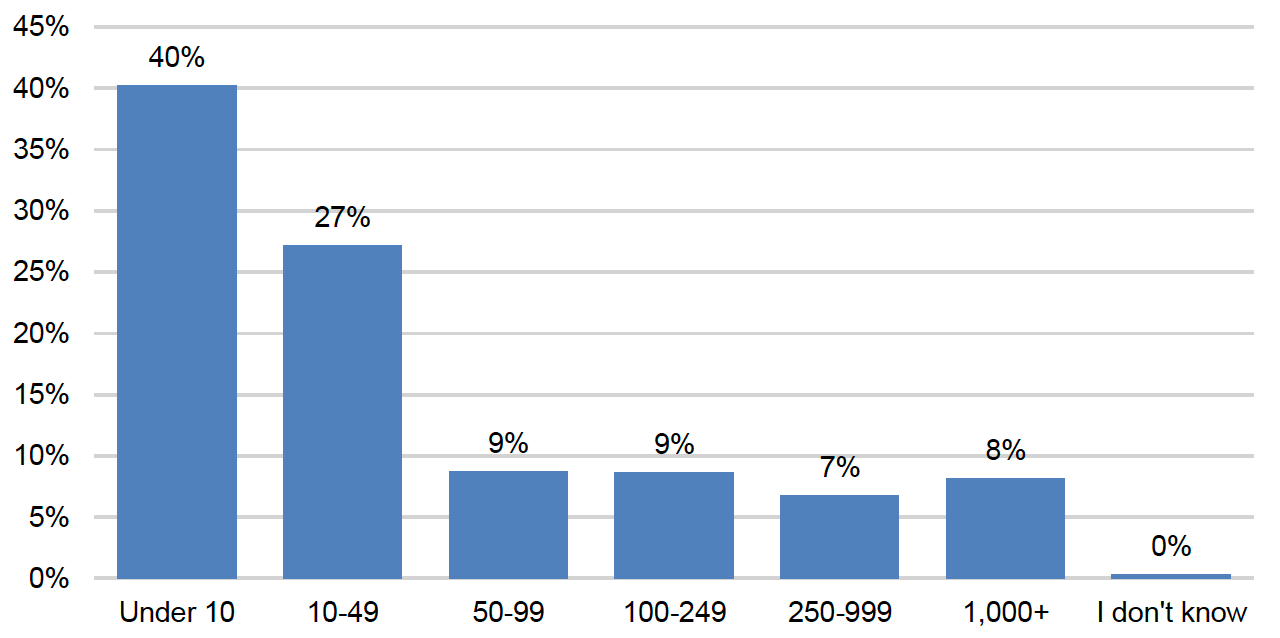
Combined, 85% of respondents were from SMEs – this figure is lower than the proportion of all registered businesses in Scotland which are SMEs (99%).[5] It is also lower than the proportion of all suppliers to the Scottish public sector in the year 2018 to 2019 who were SMEs (91%).[6] This suggests that SMEs may be underrepresented in the survey responses.[7]
When broken down further, the largest share of all respondents (40%) were from micro businesses (i.e. organisations with fewer than 10 members of staff), 67% were from small businesses (i.e. organisations with fewer than 50 members of staff), 17% were from medium-sized businesses (with 50-249 members of staff) and 15% were from large businesses (with at least 250 members of staff).[8]
We also asked respondents about their turnover in the last financial year. As shown in Figure 2.3, of 1,549 respondents, the greatest proportion (16%) were from organisations with a turnover of less than £82,000. The second largest category of respondents were those who reported a turnover of £25 million or more (15%).
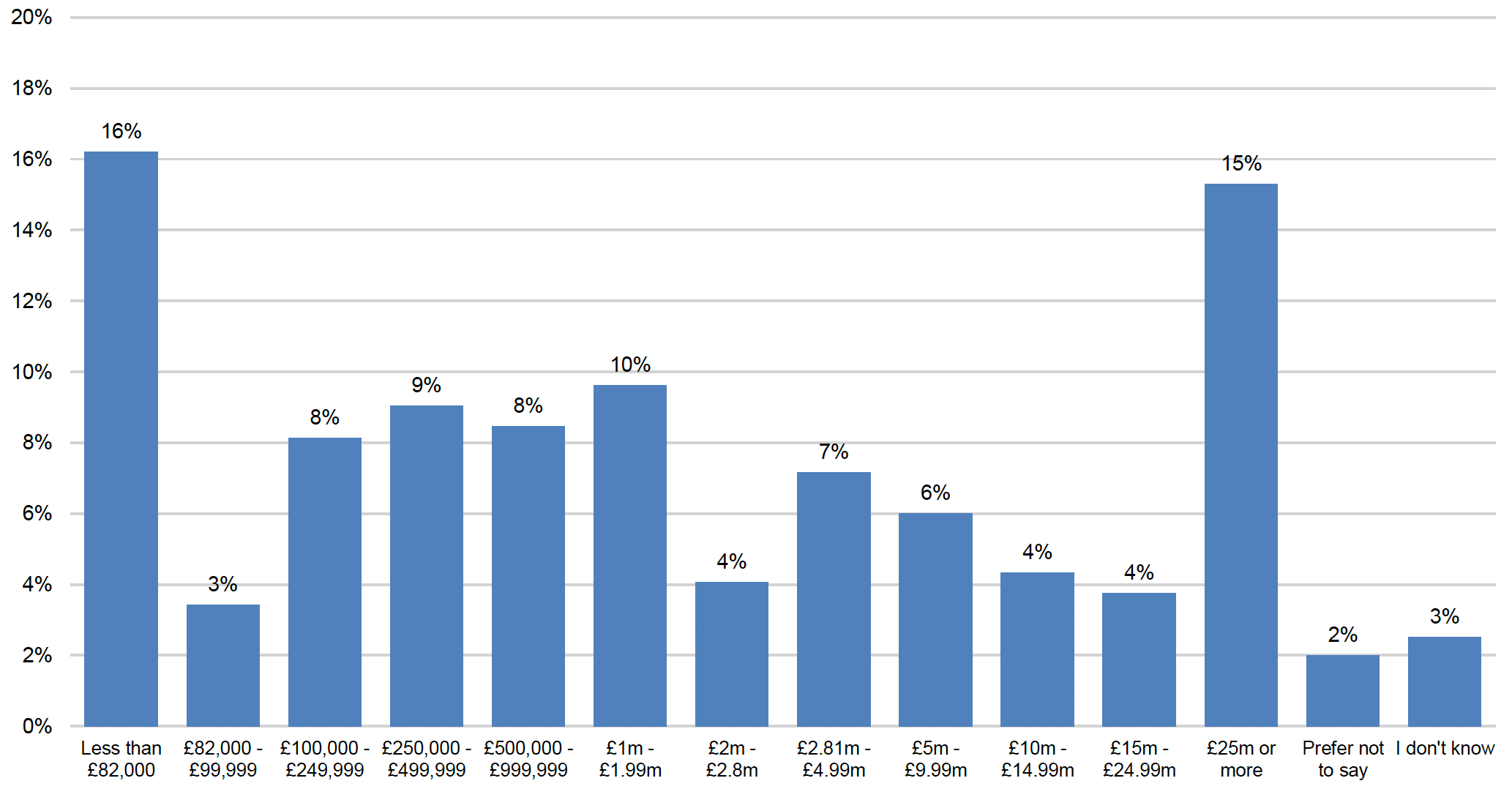
A wide range of business sectors were represented in the survey responses. Table 2.1 provides an overview of the sectors that respondents reported operating in.
| Business sector | Proportion of respondents |
|---|---|
| Accommodation and food services | 1% |
| Administrative and support service activities | 1% |
| Agriculture, forestry and fishing | 4% |
| Arts, entertainment and recreation | 2% |
| Construction | 15% |
| Education | 6% |
| Electricity, gas, steam and air conditioning supply | 1% |
| Human health and social work activities | 7% |
| Information and communication | 8% |
| Manufacturing | 9% |
| Mining and quarrying | 0% |
| Professional, scientific and technical activities | 13% |
| Public administration and defence, compulsory social security | 0% |
| Real estate activities | 1% |
| Transportation and storage | 5% |
| Water supply, sewerage, waste management and remediation activities | 1% |
| Wholesale and retail trade, repair of motor vehicles and motorcycles | 2% |
| Other service activities | 22% |
The greatest share of respondents were from businesses classed as other service activities (22%), followed by businesses in the construction (15%) and professional, scientific and technical activities (13%) sectors.[9]
When compared to the wider base of registered businesses in Scotland, suppliers from businesses classed as 'other service activities' and those from the construction sector may both be overrepresented in the survey; 5% of registered private sector businesses in Scotland are classed as other service activities businesses, while 12% belong to the construction sector.
That construction firms in particular may be overrepresented likely reflects the methods adopted in publicising the survey – in particular, the assistance provided by stakeholders from the construction sector. It also likely reflects the fact that construction is an area of high relevance to public procurement; in 2018 to 2019, the construction sector accounted for the largest amount (£2.1 billion) of all public procurement spend in Scotland.[10]
Firms from the professional, scientific and technical activities sector may be underrepresented in the survey, given that they represent 17% of all registered private businesses in Scotland.[11],[12]
Our survey attracted responses from businesses with well-established trading histories, as well as from new businesses. Of 1,547 respondents, over half (54%) reported that they have been trading for over 20 years. In addition:
- 21% of respondents have been trading for 11-20 years;
- 14% reported that they have been trading for 0-5 years;
- 12% have been trading for 6-10 years.
Largely, the views of more established businesses dominated in the survey. Later in this section, we say more about the implications of this for future research.
We received responses from suppliers located across Scotland. Table 2.2 below provides a breakdown of respondents by local authority.[13]
| Local authority | Proportion of respondents |
|---|---|
| Aberdeen City | 2% |
| Aberdeenshire | 2% |
| Angus | 1% |
| Argyll and Bute | 1% |
| City of Edinburgh | 8% |
| Clackmannanshire | 0% |
| Dumfries and Galloway | 2% |
| Dundee City | 1% |
| East Ayrshire | 1% |
| East Dunbartonshire | 1% |
| East Lothian | 1% |
| East Renfrewshire | 1% |
| Falkirk | 2% |
| Fife | 3% |
| Glasgow City | 12% |
| Highland | 4% |
| Inverclyde | 1% |
| Midlothian | 2% |
| Moray | 1% |
| Na h-Eileanan Siar | 1% |
| North Ayrshire | 1% |
| North Lanarkshire | 4% |
| Orkney Islands | 0% |
| Perth and Kinross | 3% |
| Renfrewshire | 1% |
| Scottish Borders | 2% |
| Shetland Islands | 0% |
| South Ayrshire | 1% |
| South Lanarkshire | 4% |
| Stirling | 2% |
| West Dunbartonshire | 1% |
| West Lothian | 2% |
| N/A - my organisation is based outside of Scotland | 31% |
Over two thirds (69%) of respondents were from organisations located in Scotland. Twelve per cent of all survey respondents were based in Glasgow City, while 8% were from organisations located in the City of Edinburgh.
Around one third (31%) of respondents were from organisations based outside of Scotland. The qualitative responses indicate that around 85% of these respondents were based in the UK and 9% were based outside the UK. The remaining 6% did not say – or were not clear about – where they were based.[14]
We asked respondents about the predominant market focus of their organisations. Figure 2.4 summarises the responses received.
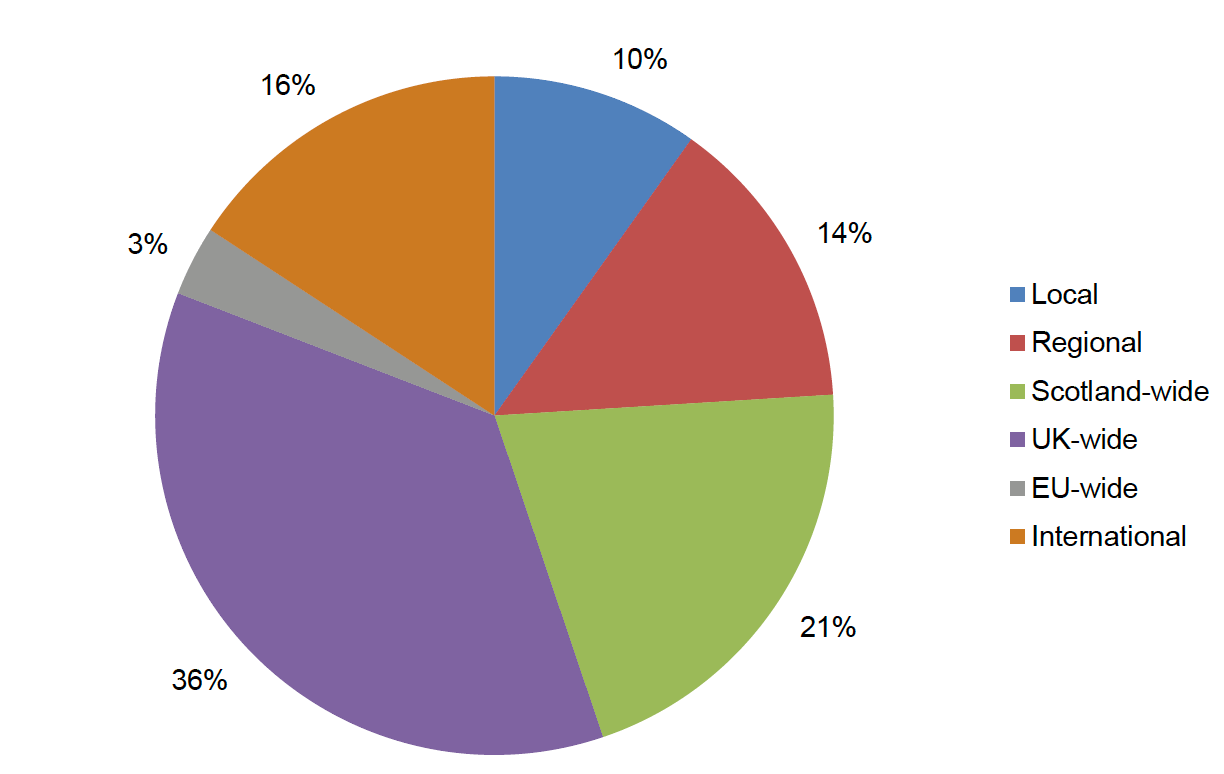
Over one third (36%) of responses received were from organisations with a UK-wide market focus – more than any other response category. This was followed by organisations with a Scotland-wide focus (21%).
Generally, respondents to our survey were familiar with the process of tendering for Scottish public sector contracts. We asked respondents to provide information about the number of years' experience their organisation had in tendering for such contracts (Figure 2.5).
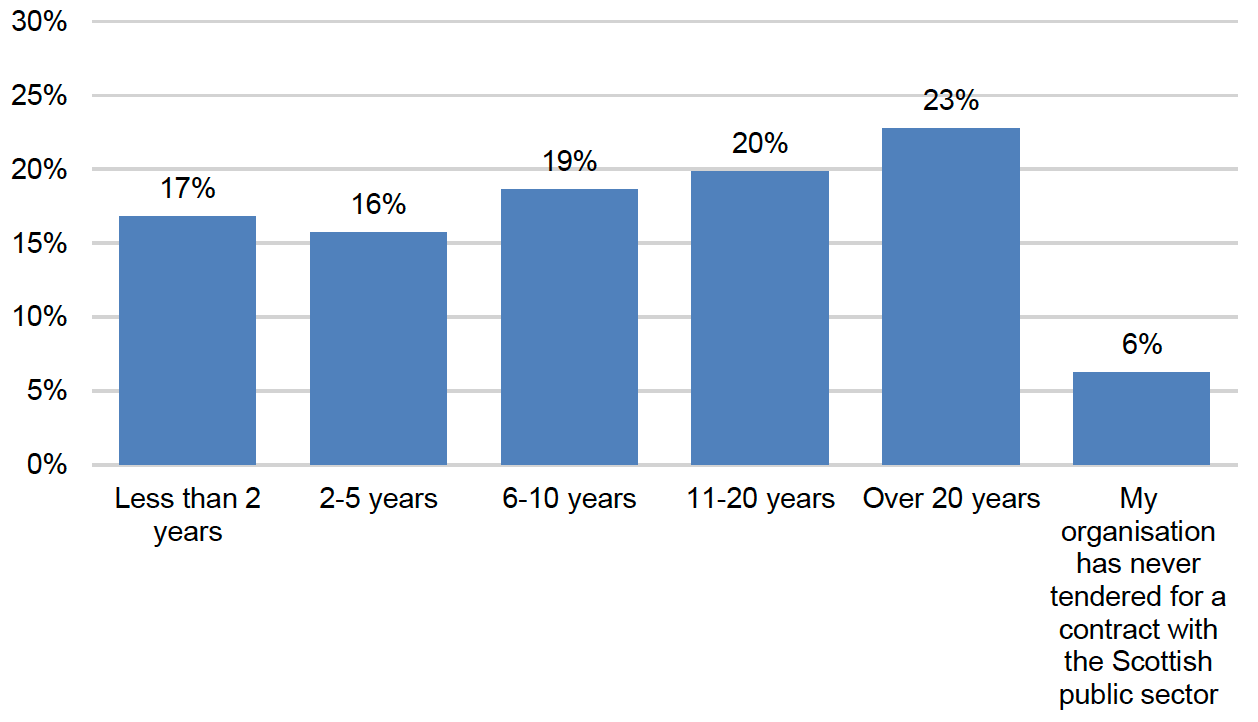
Ninety-four per cent of respondents reported at least some experience of tendering for Scottish public sector contracts. The greatest proportion of respondents (23%) were from organisations with over 20 years' experience of this kind.
As such, the responses provided largely reflect those of relatively well-established organisations with experience of tendering for contracts, compared to newer and less-established suppliers who have less (or no) experience of tendering. This is a notable limitation to the survey which likely reflects the approach to disseminating the survey. For example, as mentioned previously, the survey was publicised to suppliers registered on the PCS website – in other words, to suppliers who are at least already interested in contracting with the public sector and who are likely to have already bid for contracts in the past. The dominance, in this survey, of relatively well-established companies with a history of tendering for public contracts means that more research may be necessary to find out more about the views and experiences of newer and less-established businesses in relation to public procurement.
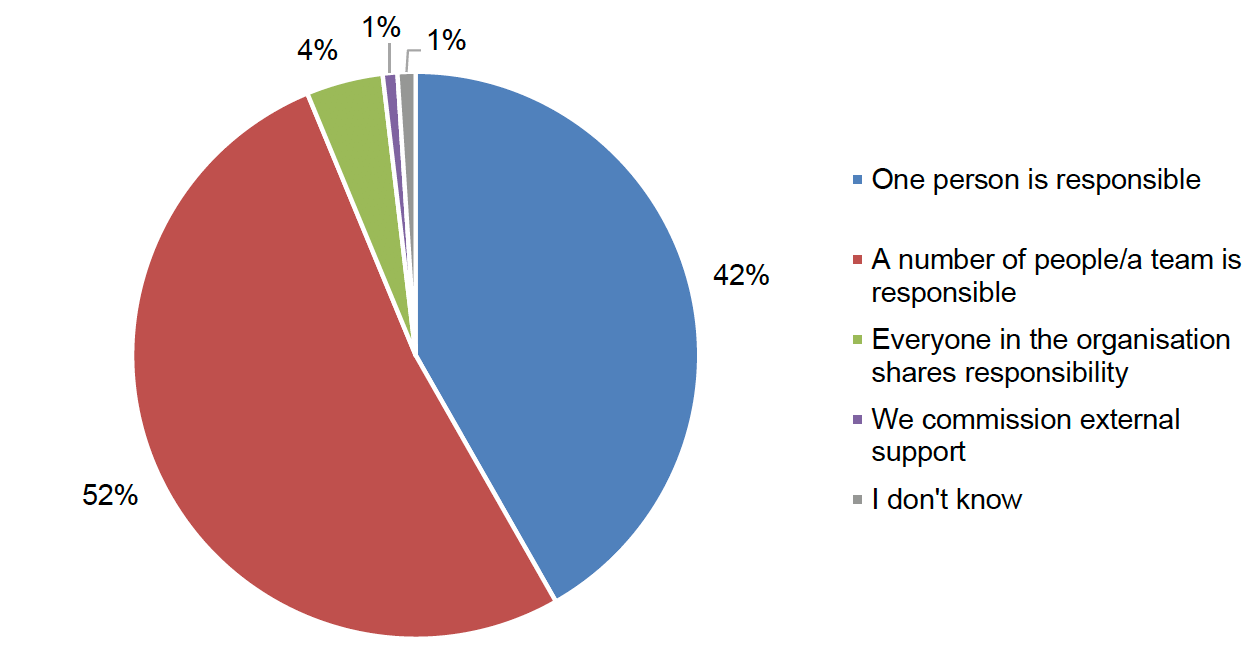
As indicated above, over half (52%) of respondents were from organisations where a number of people or team is responsible for the tendering process. Forty-two per cent of respondents indicated that just one person is responsible for tendering.
Contact
Email: socialresearch@gov.scot
There is a problem
Thanks for your feedback